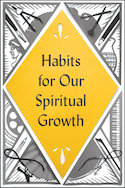What Is an Evangelical?

Are you an evangelical? It’s complicated. I thought I was until someone told me that since I was, I was also a white supremacist. This is what happens when theological terms are defined by the broader culture. So let’s clarify what it means.
The Complexity of the Modern Term
“Evangelical” is a contemporary grouping of Protestant Christians that have their roots in late eighteenth and early nineteenth-century revivalism. They generally share four characteristics, the well-known Bebbington Quadrilateral: biblicism (the centrality of the Bible), conversionism (the individual acceptance of Jesus as Savior), activism (the requirement for evangelism and mission), and crucicentrism (the atoning work of Jesus on the cross). While some of these characteristics may be shared with other Christian traditions, evangelicals are also further located in the context of the twentieth-century debates between theological liberals and conservatives. These three ideas—Protestant Christianity, revivalism, and Bebbington’s Quadrilateral—triangulate the social identity of evangelicals in the United States today.
The term is not used the same way in other parts of the world. In Europe, for example, it refers to an ecclesial identity that is not Roman Catholic. In the UK, it shares some similarities with the use in mainland Europe; however, it is also used as a subgroup identity for low-church Anglicans, as well as for those not attached to the Church of England but still identified by the above three ideas. This suggests that “evangelical” is not simply a political identity, as it is all too often presented in the early twenty-first century, though it is a contested and somewhat malleable term.
The New Testament Root of “Evangelical”
The term “evangelical” draws from the lexical setting of the New Testament Greek noun euangelion, which can have a contextual meaning such as “good news” or, as some English translations of the Bible translate it, “gospel” (Gal. 1:11; Rom. 1:1, 16). The rationale for this group label is that those committed to biblicism, conversionism, activism, and crucicentrism may properly be understood as those who have aligned their patterns of belief and embodiment with the aims of the gospel. It is the message that God has acted in Jesus of Nazareth in order to redeem humanity, establish the kingdom, and restore creation. The ecclesial communities who identify themselves as evangelical understand their mission as the proclamation of this good news throughout the world. While there is significant debate as to the social implications of the gospel, there is agreement on the centrality of Jesus to the message.
When the diverse ecclesial label “evangelical” is attached to the term “theology,” it raises a perennial challenge: How does one define evangelical theology ? It is a theology that has its focus on the gospel of Jesus Christ from beginning to end. Several implications may be detected from this. Evangelical theology is fully Trinitarian, orthodox in its Christological teaching, and animated both by Christ’s atoning work on the cross and by the centrality of the Christian community of faith, gathered for worship and mission.
Twin Components: “Protestantism” and “Revivalism”
Two terms mentioned in the opening sentence of this post need further definition: (a) Protestantism and (b) revivalism, since evangelicalism is a nested social identity within these two movements from church history. Protestantism is a sixteenth-century movement of protest concerning the beliefs and practices of the Roman Catholic Church, itself a branch of Christendom that resulted from an earlier split with the Orthodox Church in 1054. The material principle of the Protestant Reformation—what made it possible—is that justification of sinners occurs by grace alone through faith alone in Christ alone. The formal principle—its unique shape—is Scripture alone. Scripture formed the doctrine that made possible a movement to reform the church for the glory of God alone. Since a protest movement is inherently unstable, though, Protestantism quickly branched into four streams: Lutheran, Reformed, Anglican, and Anabaptist. As these grew, further movements developed: Baptists, Methodists, and eventually Pentecostals.
The second movement important for understanding evangelicalism is revivalism, a conversion-and-renewal movement in the late eighteenth and early nineteenth centuries. Its roots were in the Reformation’s Lutheran stream in Germany that developed into pietism—an approach to the Christian life emphasizing holiness and personal experience in contrast to the dry orthodoxy that had overtaken much of Europe. A shared spiritual ethos also developed with Puritanism, especially in England and America, along with the Great Awakening and eventually the Pentecostal outpourings. Revivalism was characterized by (a) longing for repentance, (b) confident expectation for revival, (c) gospel proclamation, and (d) renewal of ardor and scripturally based worship and mission practices.
Recent Movements Around the Evangelical Label
Why does this matter? In the last several years, there has been a move to give up on the “evangelical” label, with some referring to themselves as “ex-evangelicals.” It has also, no doubt, been co-opted by political leaders and has drifted from its original gospel orientation. Labels matter, though, and sometimes we need to revisit what they indicate. When my evangelical identity reconnects the gospel with my theology and the church, it is functioning the way it should. But when it only connects an inward-focused subgroup, a condition referred to as koinonitis, then an intervention is needed—one that requires more than Dr. Phil.
50 Most Important Theological Terms
by J. Brian Tucker and David Finkbeiner
Theology can be intimidating, full of big words and lofty ideas. Yet theological terms aren’t just for professors to argue about in the...


Free ebook: Habits for Spiritual Growth
Sign up for our weekly email and get a free download
Bible Insights by Email
Sign up for learning delivered to your inbox weekly

Free ebook: Habits for Spiritual Growth
Sign up for our weekly email and get a free download